We’re deep into our wedding budgeting series (see more here), and today we’re talking all things wedding flowers.
Flowers are at the heart of so many wedding moments. They contribute to the tone for the event’s style, bring your colours to life, and often appear in your most photographed memories. But – as many couples discover – flowers can be one of the trickier parts of your budget to nail down. Prices fluctuate with the seasons, availability, and even last-minute demand.
Like every part of wedding planning, it all starts with your priorities. Are grand floral installations and abundant arrangements non-negotiable for you? Or would you rather keep things simple and understated? Getting clear on this early will help you decide how much of your budget to put towards flowers, and what kind of impact you want them to make.
Think, too, about the feeling you want your flowers to create. Will they be the hero of your ceremony and reception styling, or just a gentle accent? Are you dreaming of specific blooms, or happy to go with what’s local and in season? Your answers will shape not only your budget, but the whole way you work with your florist.
We have been lucky enough to have an amazing array of wedding florists share their insight with us to help build this handy guide. A big thank you to Stephanie from Nunu Designs, Christina from Grumpy Flowers, Alicia from Form Over Function, Ali from Handpicked, Brooke from Victoria Whitelaw Beautiful Flowers, Kristen from Kris McKee Floral Design, Melinda from Blooms By Mel Floral Styling, and Courtney from One Fine Daisy.
Main image -Floral Design – Form Over Function, Photography – Taylor Kezia Photography
What Do Wedding Flowers Cost In Australia?
Wedding flowers in Australia can vary dramatically depending on your style, guest count, and how much you want to include. For most couples, full floral styling – covering bouquets, buttonholes, ceremony flowers, and reception arrangements – lands somewhere between $3,000 and $15,000. Some couples keep it simple and spend $1,000 or $2,000, while others go all out with lavish installations and can see bills of $10,000 or even more. One florist told us the cost can be, “As much or as little as you want to spend! I’ve seen three-person elopements with $10k florals. I think as long as you are spending what you’re comfortable with and you’re receiving value, then there’s no set amount.”
There’s no single rule, because every florist’s business is unique. “Every florist has different costs to run their business, and as well are also at different stages of their career. Some people might be starting out and have a home studio they work out of, and some have warehouses, which would cost more to run. This does really make it tricky for the industry to have a standard, as it can fluctuate.” Some have no minimum spend and love small, simple weddings. Others start at $5,000 or $10,000 and work mostly with large-scale events. “If you’re after luxe imported roses and orchids, you’re looking to work with a larger florist with a minimum spend and a large team. If you’re wanting a smaller wedding with seasonal flowers, you can approach a small business.”
If flowers matter to you, many florists we spoke to suggest allocating 10 to 30 percent of your total wedding budget to florals and styling. “If flowers are a huge factor, then 20 to 30 percent is a good budget to work with so you can tick all your inspo boxes.”
For some couples, flowers are a major priority – sometimes even outspending their venue. “It’s not as uncommon as you might imagine for couples to spend more on flowers and styling than on the venue cost for the reception, including food and drinks.”
In the end, what you spend depends on your guest list, your wish list, and how important flowers are to you and your partner. Next, we’ll dig into what’s included in a florist’s package and the little details that can sneak up on your spend.
What Affects The Price You Pay For Wedding Flowers?
When it comes to wedding flowers, a handful of big factors can nudge your budget up or down. Before we dive into what’s included in a typical package, here’s what really shapes your floral spend.
Guest Count and Wedding Party Size
The more guests you have, the more tables to dress and the bigger your wedding party, the more bouquets and buttonholes you’ll need. As one florist put it, “The bigger the wedding party, the higher your budget has to be.”
Seasonality and Date
Flowers are most affordable and beautiful when they’re in season. Peak dates like Valentine’s Day or Mother’s Day can see prices triple, and those extra costs get passed on. “Don’t get married around Valentine’s Day. If you do, expect roses to cost more, be harder to get, and often lower quality.” Another florist added, “Big holiday periods such as Valentine’s Day and Mother’s Day triple the cost of blooms for us to buy, which we then have to pass on to the couple. Quality can also vary after these events, so I would avoid straight after these dates as well.”
There’s also the simple reality of the seasons. Spring and summer bring an abundance of blooms, while winter can mean fewer options and higher prices.
Flower Choices and Flexibility
The more specific you are, especially if you want imported or out-of-season varieties, the higher the price. Being open to what’s in season will almost always get you better value.
Type of Installation and Styling
Large installations like arches, hanging features, or lush backdrops require more flowers and extra hands on deck. “It takes more to style long tables than round ones,” one florist noted. The bigger or more complex the install, the more you’ll pay for delivery, set-up, and pack-down.
Logistics, Labour, and Location
Remote venues or separate ceremony and reception sites mean extra travel, more time, and often accommodation for your floral team. “It’s not just about the florals. You’re also paying for hours of admin, planning, and trips to the markets. If you want your flowers moved, packed down, or repurposed, allow extra in your budget.”
Grand installations or tricky venues can also require a bigger team and longer set-up.
Weather and Unpredictable Events
The weather has a real impact. “With climate change, we are seeing unexpected unreliability. For example, my favourite dahlia grower had a frost in February this year.” Heatwaves, storms, or frosts can limit what’s available and push up prices, sometimes at the last minute.
The Bottom Line
If you want an abundant look without blowing the budget entirely, be flexible with your flower types and timing, and trust your florist’s advice. The more you know about what shapes your final bill, the easier it is to plan ahead and keep your budget working for you.
Floral Design – Handpicked, Photography – Penny Ryan
What Does A Wedding Flower Package Include?
When you book a wedding florist, most packages start with the personal flowers: the main bouquet(s) for the couple, smaller bouquets for the wedding party, and buttonholes for the couple and attendants. From there, couples often add ceremony flowers like a floral arch, arbour or backdrop, arrangements on plinths, or petals down the aisle. Reception flowers usually come next, including table centrepieces, bud vases, or foliage for guest tables.
If they offer packages rather than a “do it all” option, florists typically provide three main types:
- Wedding party flowers only: covering bouquets and buttonholes for the couple and attendants.
- Wedding party and ceremony flowers: additionally adding one or two ceremony arrangements.
- Wedding party, ceremony, and reception flowers: additionally covering everything from aisle florals to table styling.
Many couples also add extras such as flowers for signage, the bar, the cake, or the guest book table. You can keep it simple or choose a statement installation or hanging feature. As one florist shared, “The answer is literally endless. We can, and have, decorated anything and everything.”
Here’s a list of the most common options to help prioritise your budget:
Wedding Party Flowers: main bouquet(s), bridesmaids’ bouquets, toss bouquet, boutonnières for the wedding party and special guests, corsages, hair flowers or crowns, pocket squares or pins, flower girl basket, ring bearer arrangement, wearable florals, flowers for pets, and flowers for the family home.
Ceremony Flowers: welcome signage flowers, ceremony arch or chuppah, growing garden arrangements, aisle markers, entryway arrangements, signing table arrangement, unity ceremony florals, petal toss cones, and memorial flowers.
Reception Flowers: welcome signage and seating chart arrangements, cocktail table flowers, head table backdrops, centrepieces, hanging installations, gift table flowers, guest book or wishing well flowers, cake flowers, photo booth flowers, staircase or fireplace flowers, lounge or powder room flowers, and chair flowers.
Some couples focus their budget on a few big features, such as a ceremony backdrop or a dramatic ceiling installation. Others prefer all the smaller touches, like hair flowers, signage, or floral gifts for family. One florist explained, “I’ve done everything from petals down the aisle to flowers for the family home, or a groom’s gift to the bride, and couple’s gifts to their parents.”
Keep in mind that delivery and set-up are not always included in the standard price. Moving ceremony flowers to the reception usually requires extra hands and time. “You need to take into account the flower design, where the flowers are coming from, bump-in time for the ceremony, and extra labour needed to move and reset arrangements for the reception.”
If you’re unsure where to start, have an open conversation with your florist. Share what you love, what matters to you, and let them help you create a package that brings your vision to life.
Floral Design – Grumpy Flowers, Photography – Storytellers Wedding Co
What Are the Add-Ons & Extra Costs for Wedding Flowers?
Wedding flowers come with more than just bouquets and buttonholes – and if you’re not ready for the extras, they can add up fast. From extra labour to hire items and styling time, the hidden costs can sneak into your budget unless you ask the right questions upfront. This guide breaks down the most common floral add-ons, so you know what’s essential, what’s optional, and what to plan for.
Premium Blooms & Seasonal Selection
Imported or out-of-season flowers increase cost due to sourcing, travel, and scarcity. Premium blooms such as orchids, hydrangeas, peonies, and specialty roses always cost more. If budget is limited, ask your florist to include them in select features only.
Optional extras like silk ribbons or custom bouquet wraps may also add to the final bill.
Delivery
Delivery fees vary depending on the distance and complexity. Some florists will deliver flowers to multiple addresses (like your accommodation or getting-ready location), but not all quotes include this – so always check.
Bump In, Bump Out, and Labour
Floristry involves a lot more than just flowers. From middle-of-the-night bump-ins to late-night pack-downs, labour adds up quickly – especially at large or logistically tricky venues.
- Early or late bump in: Tight venue windows can mean florists starting at 3 am or finishing well after midnight.
- Bump out: Some venues require everything to be cleared immediately post-reception, even at 1 am.
- Labour charges: These often make up around 20% of your total floral bill and cover prep, transport, set-up, and pack-down.
- Complex installs may also require additional florists or assistants to meet timing restrictions.
Site Visits and Logistics
While some florists include one venue visit in their base quote, additional visits or travel for destination weddings may be billed separately. If your event has multiple locations or complex logistics, expect higher planning and coordination costs.
Floral Design – Form Over Function, Photography – Olguin Photography
Moving, Repurposing, and Wrap Stations
It can be more sustainable – and more budget-friendly – to reuse your ceremony flowers during the reception. But that repurposing isn’t always simple.
- Repurposing flowers between the ceremony and reception requires additional staff, time, and transport.
- Florist stay-on support (for moving flowers on the day) is sometimes offered at an additional fee.
- Wrap stations for guests to take flowers home can include charges for wrap materials, labour, and management.
Installations and Statement Pieces
Big-impact floral moments – like hanging features, arches, or floral walls – require extra materials, staff, and often even specialist equipment.
- Starting prices for smaller, non-complex installations can sit around $600 per metre.
- Premium floral features may range from $2,500 to $6,000+, depending on scale and complexity.
- Installations needing scaffolding, lifts, or structural engineering will naturally increase the cost.
- Timing constraints (tight set-up windows or venue limitations) may require additional staffing to execute.
Floral Design – Nunu Designs, Photography – Anémotion
Hire Items and Add-Ons
These items are often quoted separately from flowers themselves:
- Vases and vessels
- Candles or candle holders
- Lanterns, plinths, signage stands, or ceremony arches
- Faux floral walls
- Florals for the cake, powder rooms, bar, staircases, or signage
Check whether your quote includes styling props or if they’re hired separately – some florists offer full styling, others prefer to focus just on florals.
Styling & On-the-Day Assistance
Some florists offer extra support with on-the-day styling; particularly helpful if you want a cohesive look but don’t have a wedding stylist.
This might include:
- Setting up your tablescape
- Styling the guestbook table or signage
- Arranging flowers alongside candles or keepsakes for maximum impact
Styling is generally charged as an additional labour fee depending on the time required.
Preservation Services
If you’re planning to preserve your bouquet, you’ll typically pay between $600 and $1,000 for pressing or resin preservation. Some florists will deliver the bouquet to the preservation service, while others may ask you to manage this yourself.
Public Holidays and Peak Dates
Weddings scheduled over Christmas, New Year, Valentine’s Day, or Mother’s Day often come with higher costs for both blooms and staffing. These are high-demand dates for the floral industry, and pricing usually reflects that.
The bottom line? Ask your florist about every potential extra – especially bump-in/out fees, travel, installations, wrap stations, on-the-day styling, hire items, and holiday surcharges. The more you know upfront, the more empowered you are to shape a budget that suits your priorities.
Floral Design – Blooms by Mel Floral Styling, Photography – Louise Treacy Photography
What Goes Into The Price We Pay For Wedding Flowers?
When you first see the cost of wedding flowers, it can be easy to wonder what justifies the investment. But behind every beautiful bouquet and lush table arrangement, there is a whole world of time, skill, and real business costs you rarely see.
The Flowers Themselves
As we’ve already expressed, when you receive your wedding flower quote, the flowers themselves are a big part of the cost. If you’re choosing hard-to-get blooms, imported flowers, or even flowers affected by the season, you’ll need to work that into your price.
As one florist put it, “Wholesale flowers are pricey, and the images that you look at and love on Instagram and Pinterest often require a lot of stems to create.”
If you’re set on premium blooms like orchids or peonies, “these will always cost more. This is due to factors such as their growing seasons, supply and demand, and where the blooms are grown versus where they need to travel to.”
Florists also reminded us, “There are way more flowers in the bridal bouquet (than an over the counter bouquet), the flowers are all perfect (which means some get rejected and they need to be paid for, and the time for the florist to sort through them needs to be covered), and they are really time-consuming to plan for and to make.”
Time and Labour
Before you even book your florist, there is the time dedicated to replying to your inquiry (and the immense time taken to quote, because every single wedding is different).
Florists often dedicate weeks to each wedding, long before the big day arrives. As one florist put it, “This is a how long is a piece of string question. It depends on the size of the wedding, the amount of florals, and how relaxed the couple is. But never, ever less than 25 to 100 hours.”
Before a single flower is arranged, there are emails, phone calls, consultations, quoting, and mood boards.
“Before we even touch a flower, we’ve spent around 30 hours on everything from initial consultations, quoting, and updating designs, to ordering and liaising with venues and other vendors.”
Then there are the early mornings at the flower market, prepping and conditioning every stem, and hours on site, arranging and packing down. “People often can’t believe we don’t just buy them the morning of,” one explained.
Here’s where that time goes:
- Initial emails and planning chats
- Quoting, updating mood boards, and sourcing flowers
- Site visits and venue meetings
- Early morning market runs.
- Prepping, dethorning, reflexing, and conditioning every stem
- Arranging bouquets, installations, and every little floral detail
- Delivery and set-up, which can mean hours of driving
- Late-night pack-downs and final clean-up
- Admin, follow-up, and care for repurposed or donated flowers
“It’s not just the flowers, it’s the time, the talent, the skill, the ordering, the preparing, the back and forth with the couple for six months, a year, two years.”
Expertise and Teamwork
Wedding floristry is a craft that takes years of training. Expertise matters. Qualified florists know how to fix issues, work with the weather, and create magic in less-than-ideal conditions.”
The work is physical and often demands a dedicated team. “Most weddings are on weekends, which means higher labour costs and the team missing out on important family and friend events.”
Florists pay for skilled staff, superannuation, and workers’ compensation. “We’re often a two to four-person team, working late nights and early mornings to bring your dream to life.”
Business and Running Costs
Florists are running registered, professional businesses. “Our costs include public liability insurance, premises insurance, van or truck costs, fuel, rent, superannuation, and all the admin, from accounting to marketing and tech subscriptions.”
There are physical costs too: cool rooms and associated electricity bills, storage, tools, materials (such as “chicken wire by the fence load”), water bills, recycling bins and tip fees, tape, ribbons, buckets, cleaning supplies, and training and administration.
“It’s a long, long list. Technology costs for credit cards, sharing software, CRMs, and more. The store, the workroom, and the cool room. Staff wages, insurance, vans, trucks, rego, and fuel. Plus, all the tools and supplies we use for every event.”
Design, Planning, and Communication
Designing wedding flowers is never just about following a Pinterest photo. “It’s creating something that fits your style, your venue, and your budget, while still making sure everything is flawless on the day.”
That means time spent putting together the quote, following up, making adjustments, ordering, prepping, and being available for all your questions right up until the last minute. “Nobody just knows how much we do. There is so much that goes on behind the scenes to make sure your blooms are perfect on the day.” Says another florist, “I try and demonstrate costs involved with extra staffing in my brief and quote and try to be as transparent about costs as possible.”
When you pay for wedding flowers, you are investing in far more than a beautiful bouquet. It is dozens of hours of specialist work, carefully-sourced blooms, the creativity and skill to bring your vision to life, all of the back-up and contingency planning, and a real, registered professional to support you every step of the way.
Floral Design – Nunu Designs , Photography – T-One Image
Typical Prices For Key Wedding Flowers
To help you build a more realistic wedding flower budget, here’s what florists told us about what typical arrangements cost. Remember: every quote is bespoke, and your own price will vary depending on your location, florist, flower choice, and season. Use this as a guide, not a rule.
Wedding Bouquets
Most florists told us that a standard wedding bouquet will start from $280 to $320. We heard “Our standard wedding bouquets are $299,” and “$280 is a typical going price for a seasonal bouquet.” If you want something larger, hand-wired, or especially lush, you’ll be allowing more budget. As one florist put it, “Large bouquets $350 and up. Hand-wired bouquets $500 and up.”
It is possible to go lower, especially for small or very simple designs: “My average-sized wedding bouquet of seasonal flowers costs $250. The cheapest I’ve done was $80 because it was only a few flowers, as requested by the bride.”
Boutonnières
Boutonnières (a.k.a. buttonholes) tend to be much more affordable, with most florists quoting $25–$30 each. “Our prices are $29,” said one. Another shared, “$20 for natural stemmed, bound with twine. $30 to be bound with natural fibre ribbon.” The lowest price we heard was $16.
Centrepieces
This is where you’ll see a lot of variety. One florist explained, “Centrepieces start at $149. Clusters of bud vases can range from $25 a vase to low floral puffs at $225.” For a guest table, you might budget $100-$150, while bridal table centrepieces, especially long, low arrangements, often sit between $250 and $300. Luxe or premium centrepieces, particularly if you add candles, holders, or unique vessels, usually start at $250–$350, not including delivery or set-up.
Ceremony Backdrops & Arbours
For your ceremony, hire-only frames and arbours tend to start at $149-$699. If you want fresh florals, simple half-floral designs are usually around $950-$1,200, while fully floral arbours range from $1,500 to $2,500 or more. “Our simple half-floral rectangle arbour starts at $950,” shared one florist. Another said, “Full arbour, about $2,400.” Floral plinth arrangements are typically $300-$400 per piece, plus a $50 hire fee per plinth.
Ceiling and Hanging Installations
Looking for the wow factor of a floral installation? “A very simple install, about $600 per metre,” said one florist. Others shared, “Ours start from $1,000 for small arrangements.”
If you’re after mid-sized or more intricate designs, expect $2,500–$3,000 and up, and large installations can be $4,500 on up. Even all-foliage designs aren’t necessarily cheaper: “Foliage isn’t that much cheaper than flowers. Using my 2m steel base of just foliage, $500 plus installation time.”
Floral Design – Kris McKee Floral Design, Photography – Moments Photography & Film
How To Save Money On Wedding Flowers
Worried that beautiful wedding flowers are out of reach? Our florists have shared plenty of smart ways to make your budget work harder, and every single tip comes from real experience.
- Choose impact over abundance
Rather than filling every surface, focus your budget where it counts. “Think about the impact areas that are going to be used the most,” suggested one florist. “Spend the money on a beautiful ceremony piece that can then be reused at the reception. Have a beautiful arrangement in front of the couple and then use candles and bud vases to decorate the guest tables.” Another added, “Focus on where the majority of your photographs will be taken and channel the bulk of your florals budget there, like a beautiful arbour or an installation around the head table at the reception.” Another florist says, “There are so many beautiful single-stem blooms that can carry on the theme through the tables without having to spend a fortune. Use styling elements to also create moments, such as coloured napkins and stationery. This way it all works together and creates the most impact for less of a cost.”
2. Be flexible with your flower choices
Seasonal flowers from local growers can go a long way if you’re open to the florist’s suggestions. “I offer fair prices for people who are flexible with their flower varieties. That way, I can design the floral vibe they want using flowers from my local growers. These flowers cost less than buying through wholesalers.”
Floral Design – Victoria Whitelaw Beautiful Flowers, Photography – Kyra Boyer
- Trust your florist
Let go of the Pinterest fantasy and have real conversations. “Be open about your budget, be open to their suggestions to give you the best ideas of what will work – not just for style and colour, but budget.” One florist said it simply: “Trust your florist. Turn away from Insta. Don’t fret about the lack of a hanging installation. Getting married in an incredible location? Why do there have to be any flowers at the ceremony at all? Focus the budget on creating a vibe in the party space.”
- Think about logistics
Delivery and setup add cost. “Ask your florist if the flowers can be collected from their shop or studio, and be open to changes in the design to go with this. Some designs are easier to transport without risking damage or misplacement of blooms.” And a practical warning: “Get a very trusted person to transport the flowers and let the florist pack the van or SUV. Do not send Uncle Joe in his Commodore sedan to collect the flowers.”
- Get clear on your priorities
Whether it’s choosing bud vases over large arrangements, hiring ceremony pillars, or simplifying your order, know what matters most. “You can still have quality wedding flowers on a budget – it is the level of abundance we can adjust for them.” Another added, “I ask couples to be upfront about their budgets and to be open to compromises. I’m a big believer that everyone should be able to have beautiful flowers.”
- Consider practical swaps
Packing down your own flowers or hiring items like arbours and centrepieces can make a real difference. “We offer hire options for things like ceremony pillars, arbours, reception centrepieces, which can help keep the budget in check.” And for those who want to stretch the budget, “En masse bouquets for bridesmaids and bud vases for the reception are a great way to keep things feeling full without blowing the budget.”
No matter your style or spend, honest chats, creative solutions, and a bit of flexibility – plus the right florist – are what really bring your wedding flowers to life.
Floral Design – One Fine Daisy, Photography – Bailey & Finch
Final Thoughts About Wedding Flowers & Budgets
There is a lot of chatter about the so-called “wedding tax,” but when it comes to flowers, it is not a conspiracy. What you are really paying for is the time, skill, and care that goes into making every bloom perfect for your day. As one florist put it, “They (the flowers) need to be prepared for days beforehand to make sure they are at their most optimum, perfect bloom on wedding day. I get so invested in my couples and put so much effort into making sure that everything, even non-flower-related, is absolutely perfect for them on the day. I want them to look back and feel so well looked after and not have to worry about a thing.”
Flowers are a luxury but for many couples, they are worth every cent. “At the end of the day, flowers are expensive. They are a luxury, but if they are important to you, I do feel they set such a big tone for your day. Focus on the areas that are important and work your way out from there,” said one florist.
It is easy to get caught up in comparing prices, but wedding flowers are not just another commodity. They are a craft, a service, and sometimes a real emotional investment from the florist, too. “Don’t just shop around for quotes,” one florist advised. “Find a florist you love and who fits your vibe. Have an open chat with them about what they can create within your budget and trust their advice. If it turns out you’re not a perfect match – maybe their minimum spend is out of reach – you’ll still walk away with solid advice and a clear idea of what to expect when you find another florist who is a better fit for your needs. It is about finding the right connection to bring your floral vision to life.”
Be realistic about what goes into it all. “Think about how long things might take and expect what hourly rate you would pay a professional to charge you. Flowers are the focus of so many photos and so much of the day. Allow budget for them.”
A good florist will never pressure you or try to upsell you. They will help you prioritise, simplify where it matters, and create something beautiful with what constraints you might have. Whether flowers are your number one priority or just a small piece of your day, the right florist will make sure your blooms are something you remember for all the right reasons.
We’ll leave you with these words from one of our expert florist contributors: “At the end of the day, the flowers are what you and your guests will see in almost every photo. They bring everything to life. Find a florist you trust, share your vision and your budget, and let them work their magic.”
A heartfelt thank you to our incredible contributing florists who shared their wisdom and insights: A big thank you to Stephanie from Nunu Designs, Christina from Grumpy Flowers, Alicia from Form Over Function, Ali from Handpicked, Brooke from Victoria Whitelaw Beautiful Flowers, Kristen from Kris McKee Floral Design, Melinda from Blooms By Mel Floral Styling, and Courtney from One Fine Daisy.

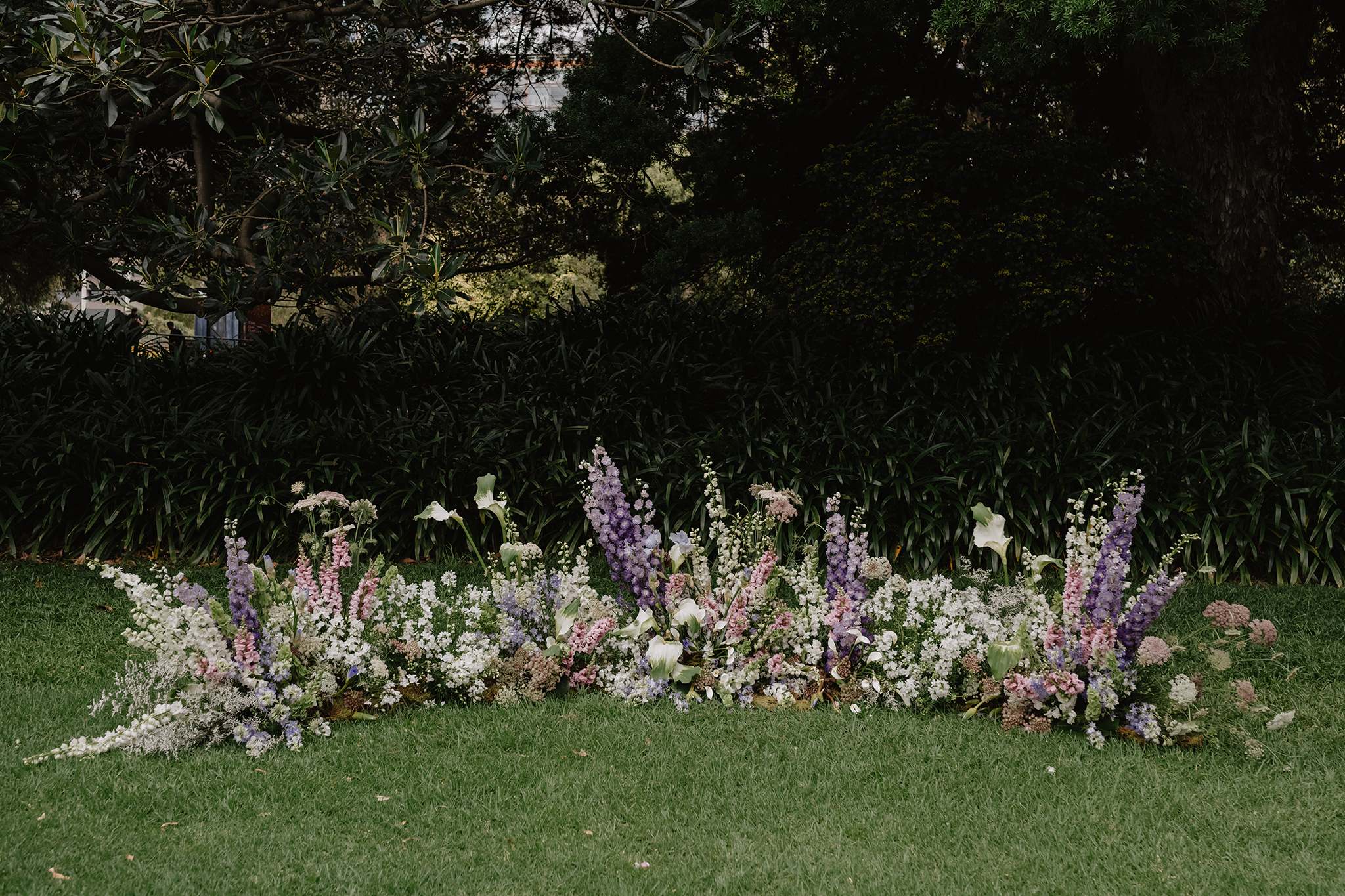
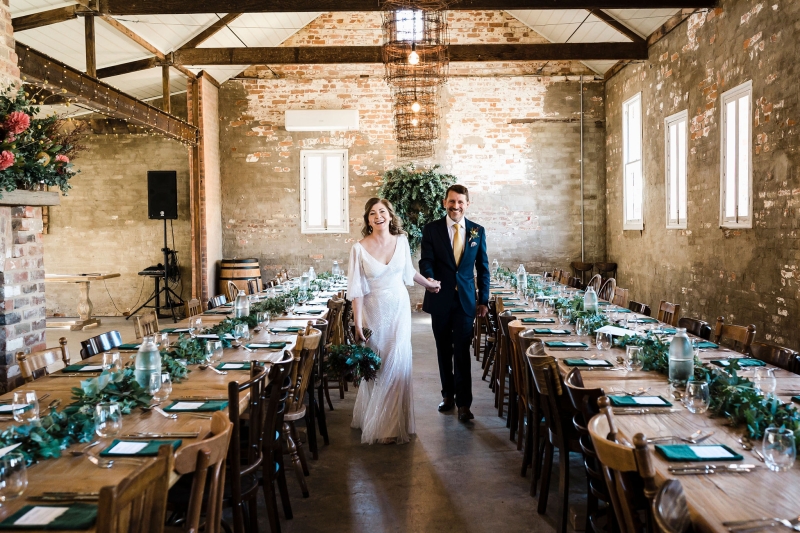

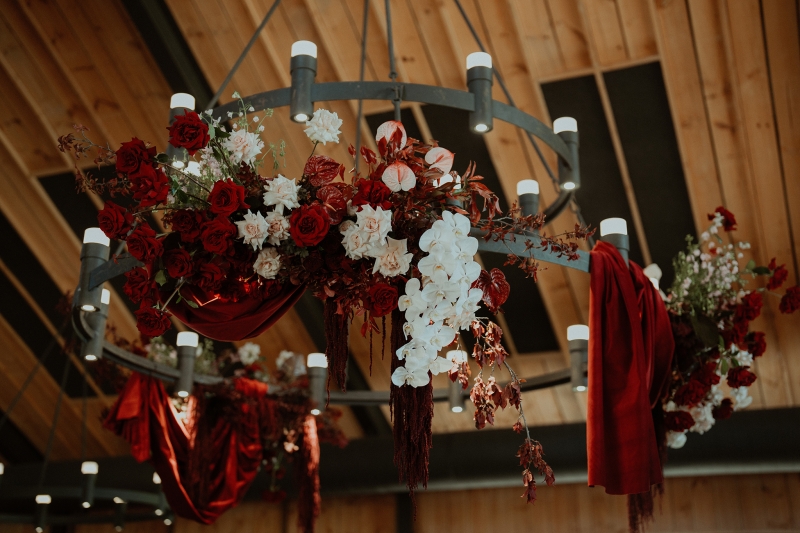
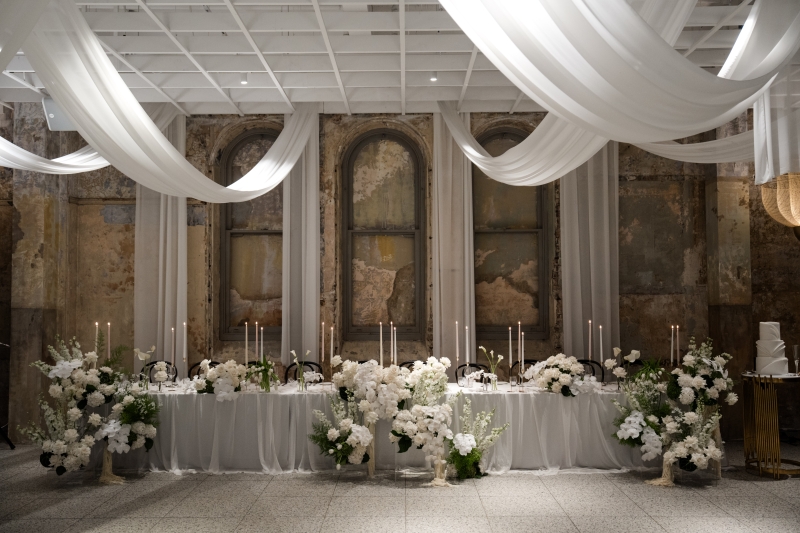
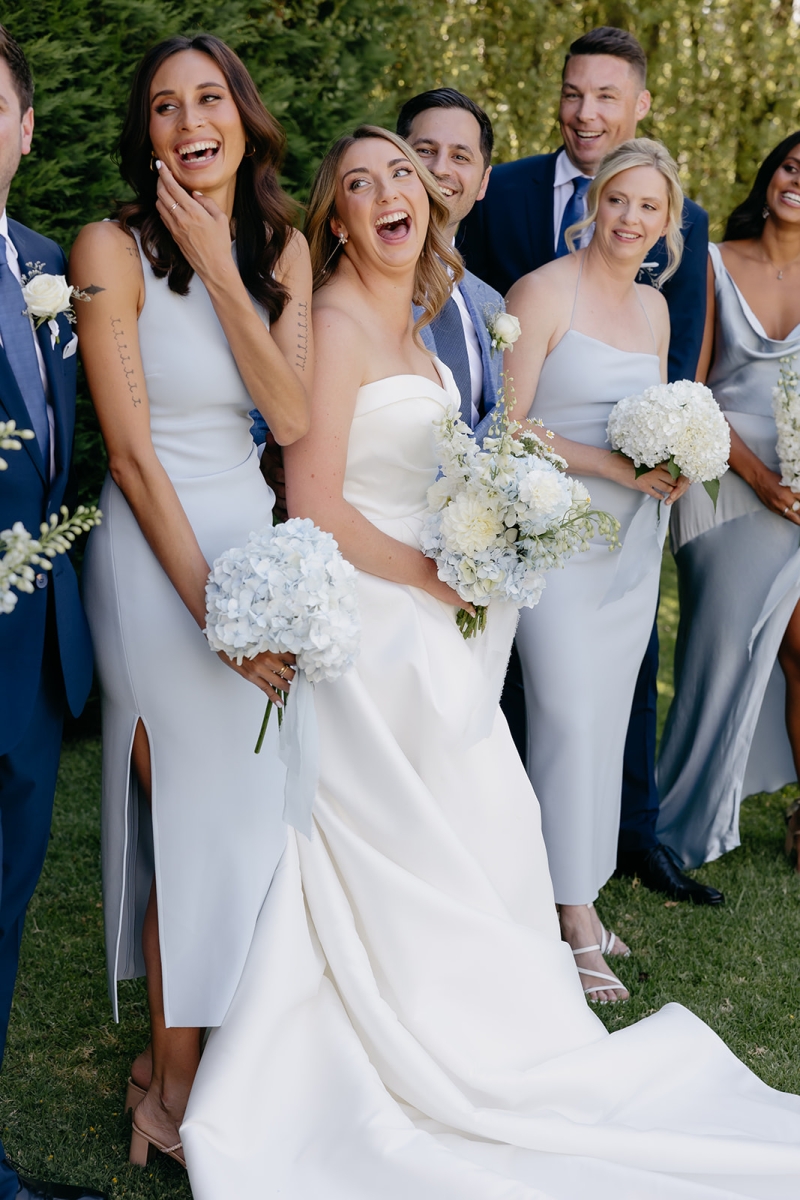

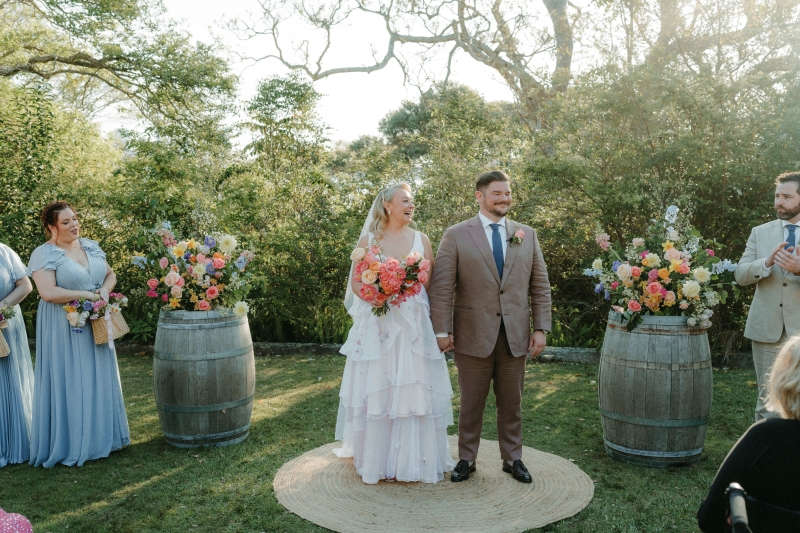
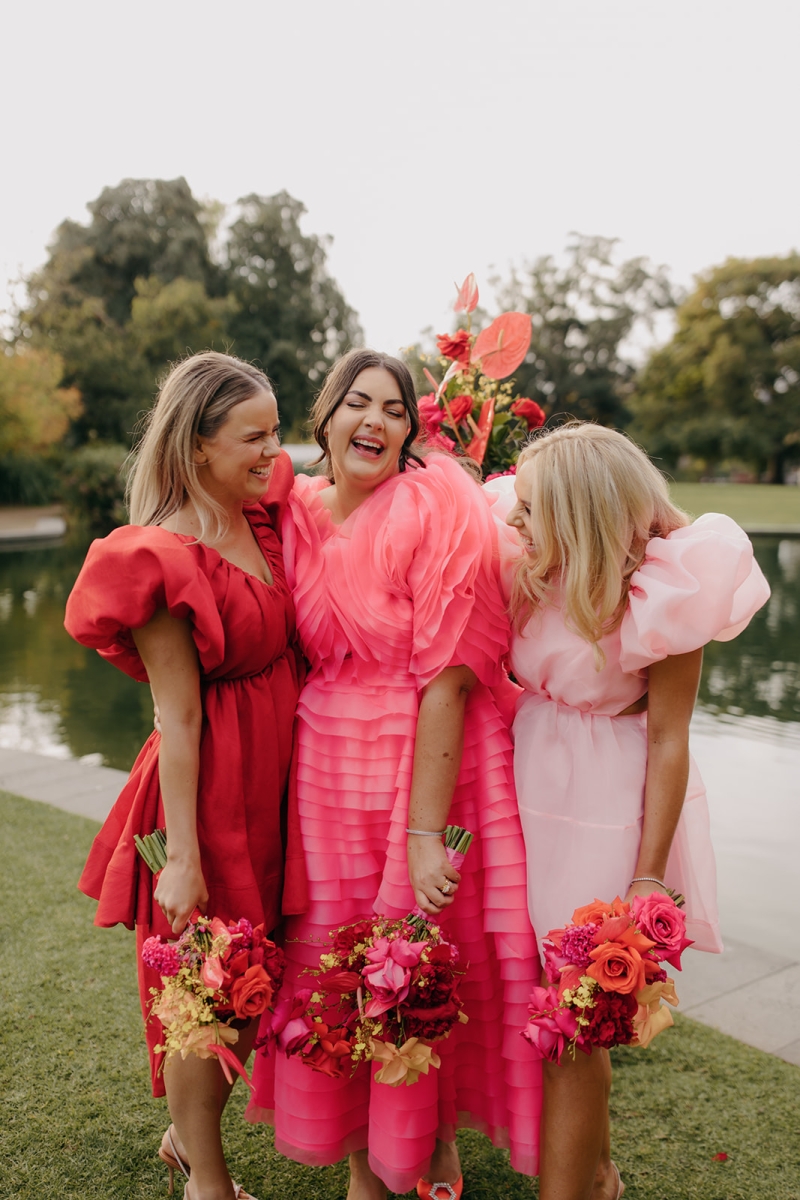
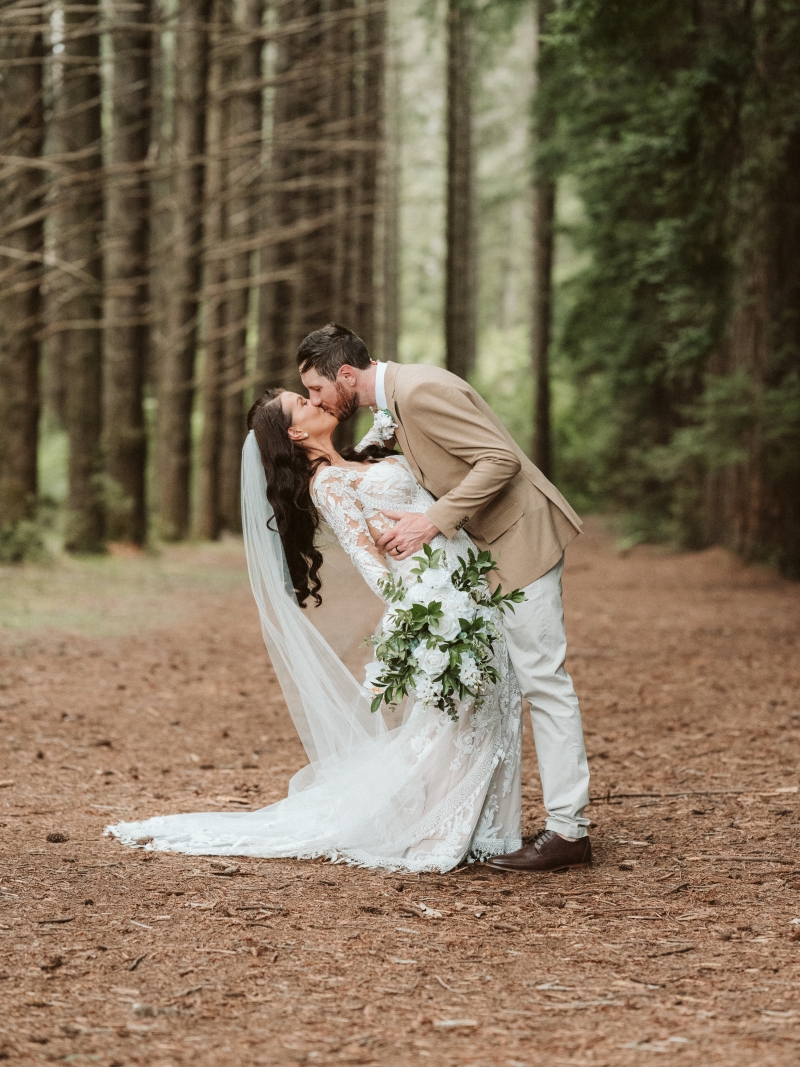



Join the conversation